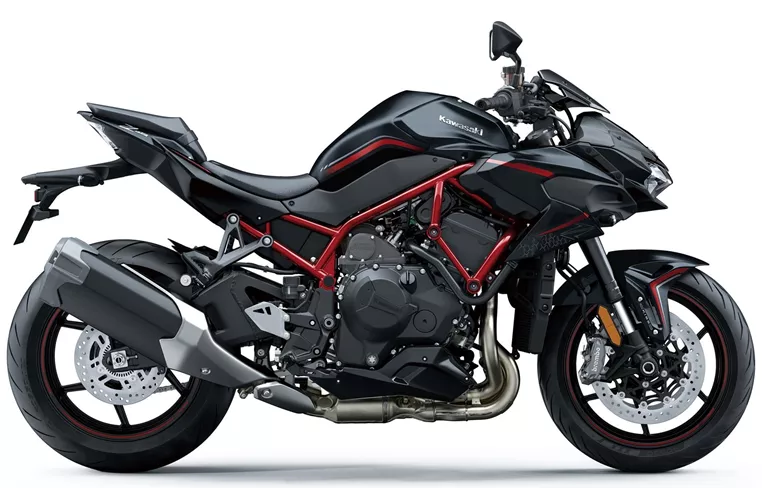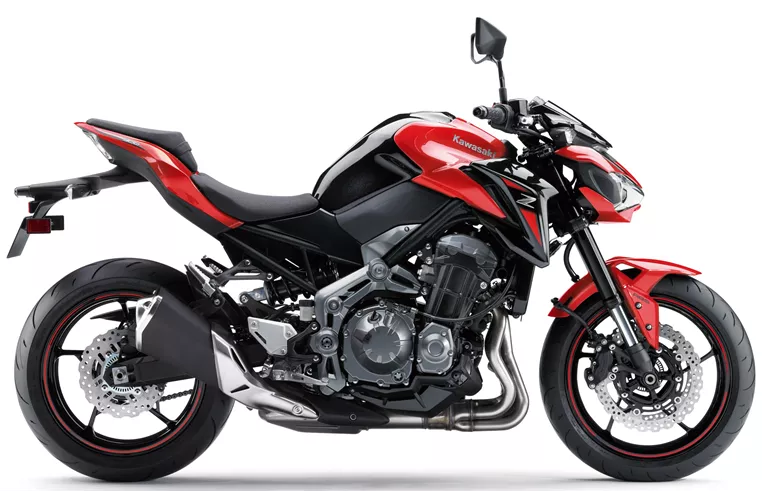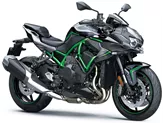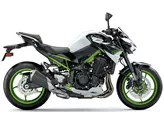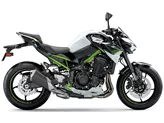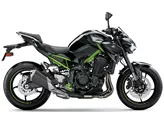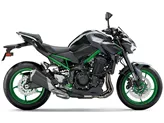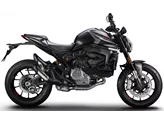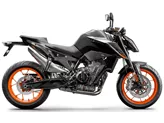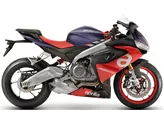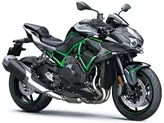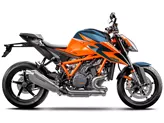Kawasaki Z H2 2020 vs. Kawasaki Z900 70kW 2018
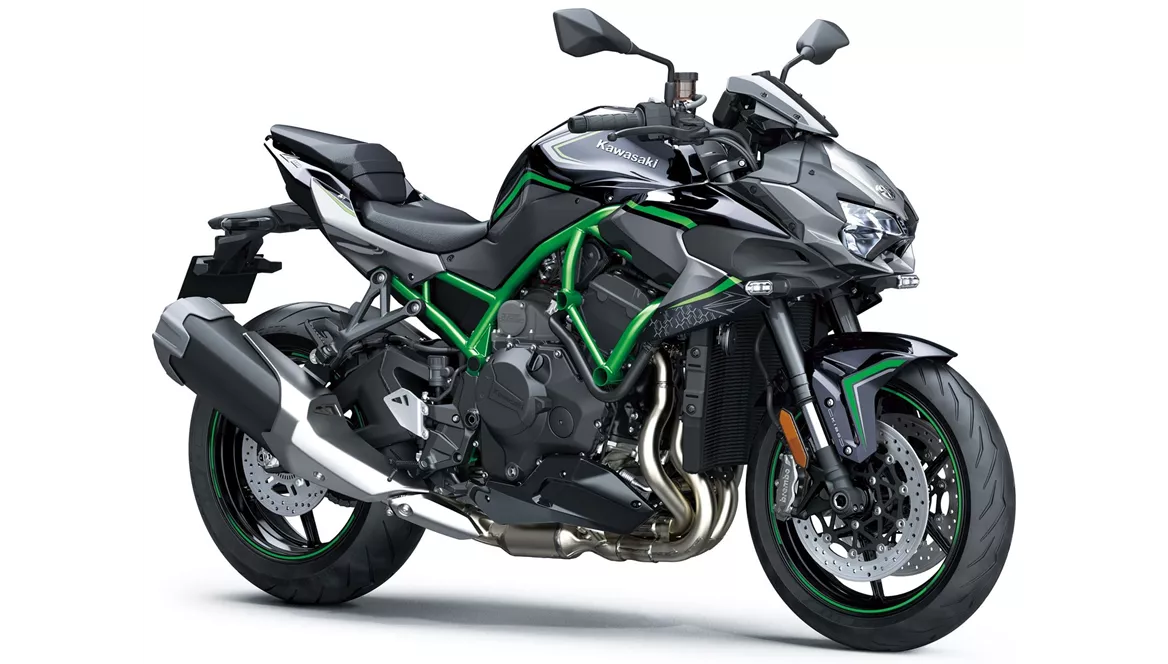
Kawasaki Z H2 2020
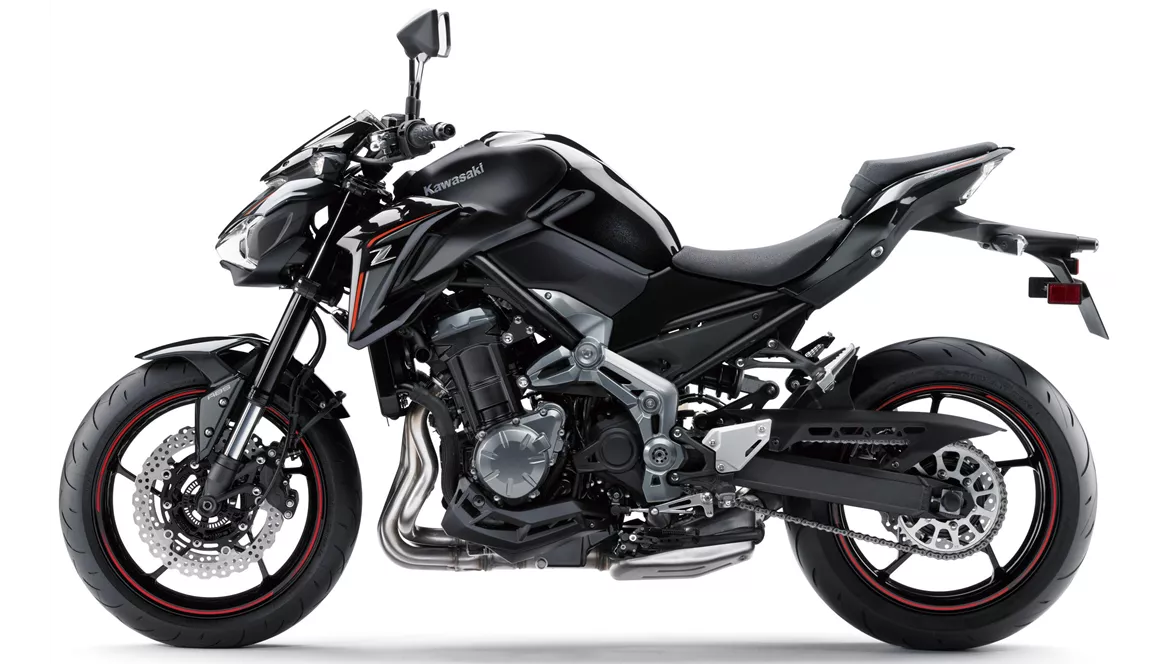
Kawasaki Z900 70kW 2018
Visão geral - Kawasaki Z H2 2020 vs Kawasaki Z900 70kW 2018
The Kawasaki Z H2 2020 and the Kawasaki Z900 70kW 2018 are both naked bikes from Kawasaki, but they have some notable differences in terms of specifications and performance.
Starting with the engine and power, the Kawasaki Z H2 2020 is equipped with a powerful inline-four engine that produces 200 HP and 137 Nm of torque. In comparison, the Kawasaki Z900 70kW 2018 has a less powerful inline-four engine with 95 HP and 91.2 Nm of torque. This means that the Z H2 has significantly more power and torque, making it a more high-performance bike.
In terms of fuel system, both bikes feature fuel injection systems, ensuring efficient fuel delivery and performance. They also have liquid cooling systems to prevent overheating during long rides.
When it comes to suspension, both bikes have a telescopic front fork and a rear swingarm with a monoshock. However, the Z H2 offers more adjustability options with compression, preload, and rebound adjustments for both front and rear suspension. The Z900, on the other hand, only has preload and rebound adjustments for the front suspension.
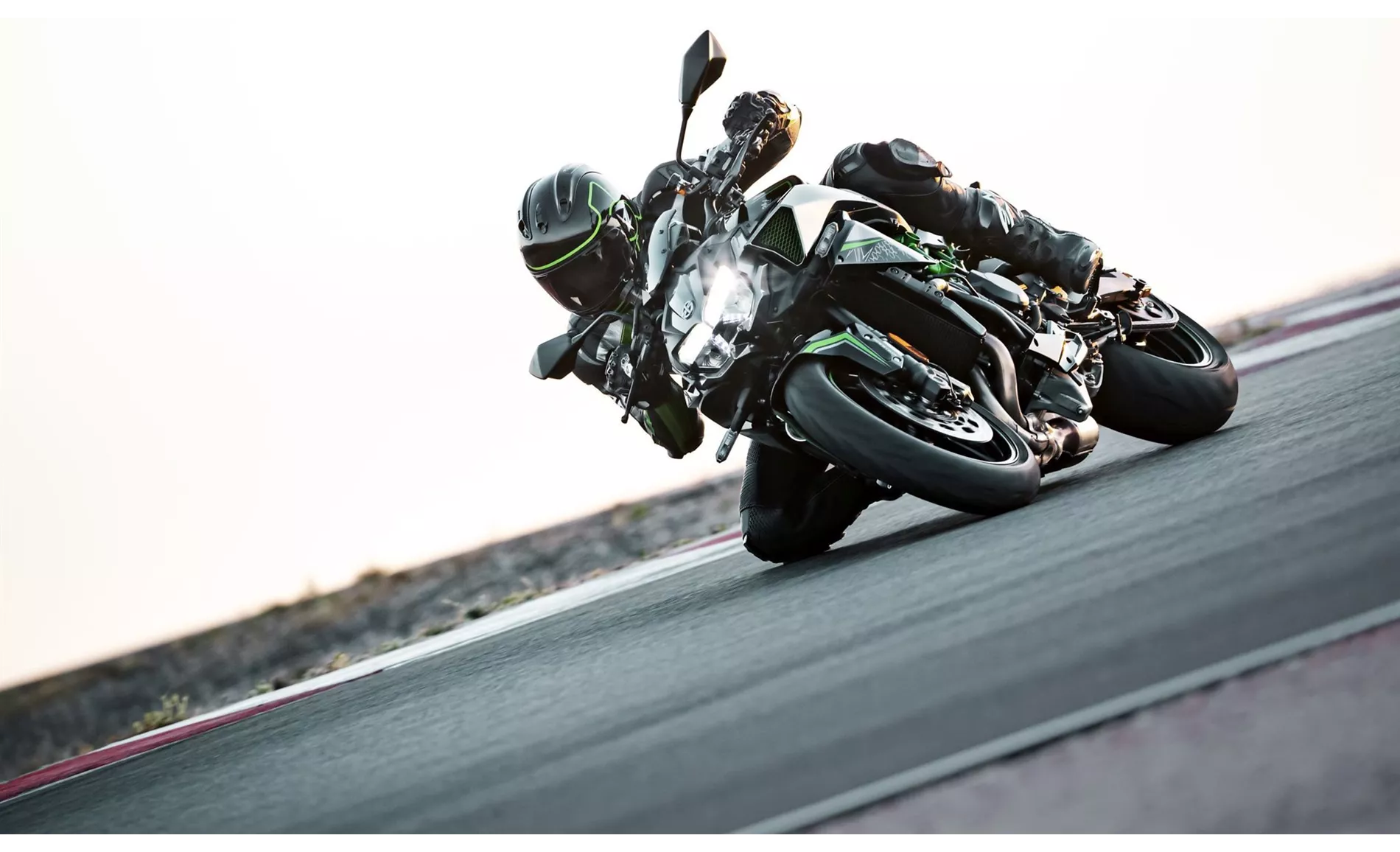
Kawasaki Z H2 2020
In terms of chassis, both bikes have a steel frame, but the Z H2 has a tubular frame while the Z900 has a double cradle frame. The choice of frame design can affect the overall rigidity and handling characteristics of the bike.
In terms of braking, both bikes feature dual disc brakes at the front, but the Z H2 has larger 320 mm discs compared to the Z900's 300 mm discs. Both bikes have four-piston calipers for improved braking performance. The Z H2 also features radial and monobloc technology for its front brakes, which can provide better braking feel and control.
In terms of advanced rider assistance systems, the Z H2 comes with a wide range of features including ABS, riding modes, curve ABS, launch control, cruise control, quick shifter, traction control, and anti-wheelie control. The Z900, on the other hand, only has ABS as its advanced rider assistance system.
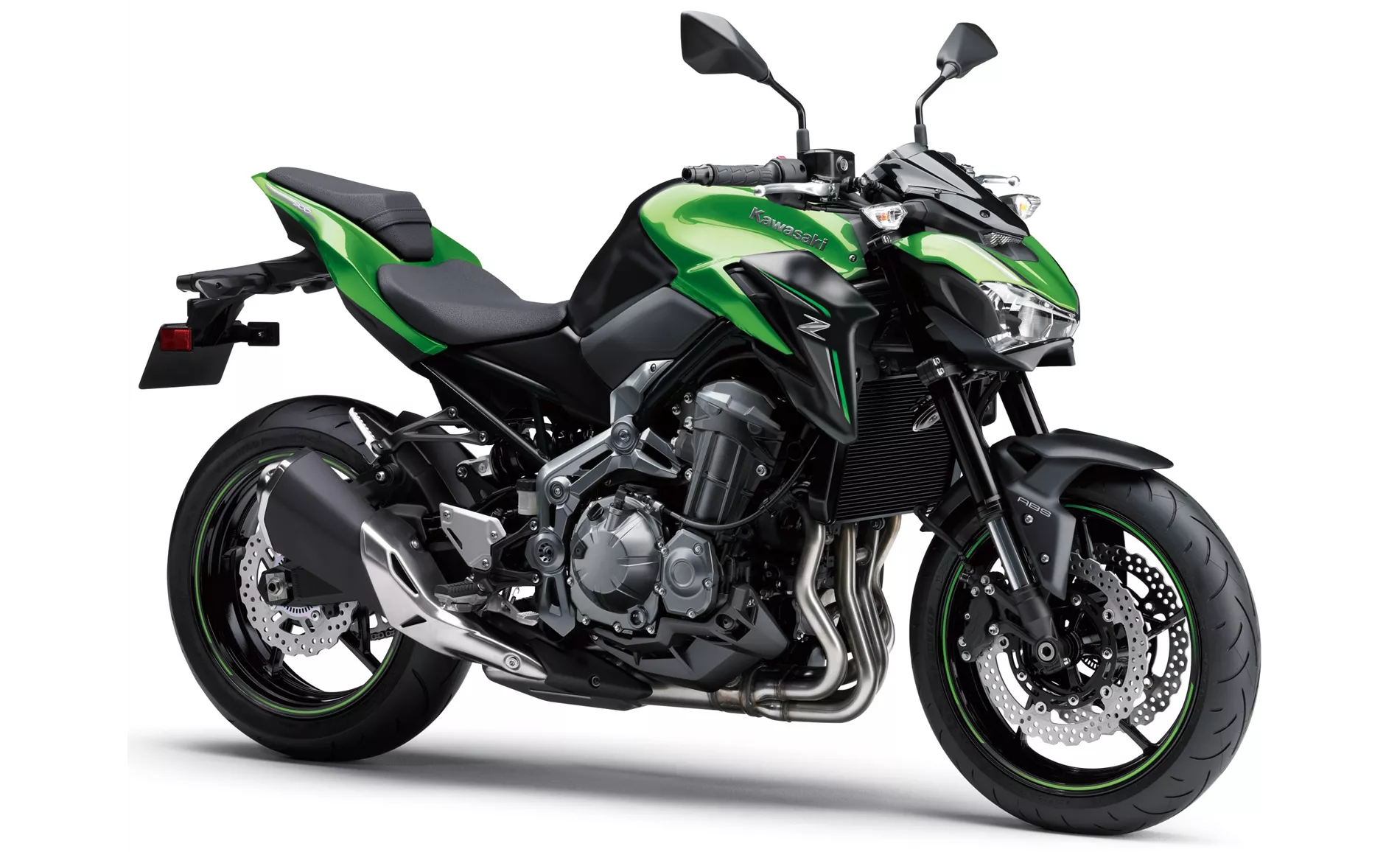
Kawasaki Z900 70kW 2018
In terms of dimensions and weight, the Z H2 has a wider front tire (120 mm) compared to the Z900 (120 mm), while the Z900 has a wider rear tire (190 mm) compared to the Z H2 (180 mm). Both bikes have the same 17-inch wheel diameter. The Z H2 has a slightly longer wheelbase (1455 mm) compared to the Z900 (1450 mm). The seat height of the Z H2 is also higher at 830 mm compared to the Z900's 795 mm. In terms of weight, the Z H2 is heavier at 239 kg (with ABS) compared to the Z900's 210 kg (with ABS).
In terms of strengths, the Z H2 is praised for its unmatched engine power, easy-to-control power delivery, comfortable riding position, high comfort for a naked bike, quiet yet charismatic sound, stable and transparent handling, and its ability to be ridden effortlessly on a daily basis. On the other hand, the Z900 is commended for its smooth engine performance, well-controlled brakes, smooth operation at low RPMs, stability at highway speeds, and overall good handling.
In terms of weaknesses, the Z H2 is criticized for its slightly delayed gear shifts, slightly soft suspension during aggressive riding, and the lack of exclusive components for a bike of its exclusivity. The Z900, on the other hand, is criticized for its small size for taller riders, high weight of 210 kg, and relatively weak acceleration due to its lower power output.
In conclusion, the Kawasaki Z H2 2020 is a high-performance naked bike with a powerful engine, advanced rider assistance systems, and a comfortable riding position. It is suitable for riders who prioritize power and performance. On the other hand, the Kawasaki Z900 70kW 2018 offers a smoother and more manageable riding experience, making it a good choice for urban riding and riders who prefer a more balanced performance.
Especificações técnicas Kawasaki Z H2 2020 em comparação com Kawasaki Z900 70kW 2018
Prós e contras em comparação
Prós e contras em comparação
Kawasaki Z H2 2020
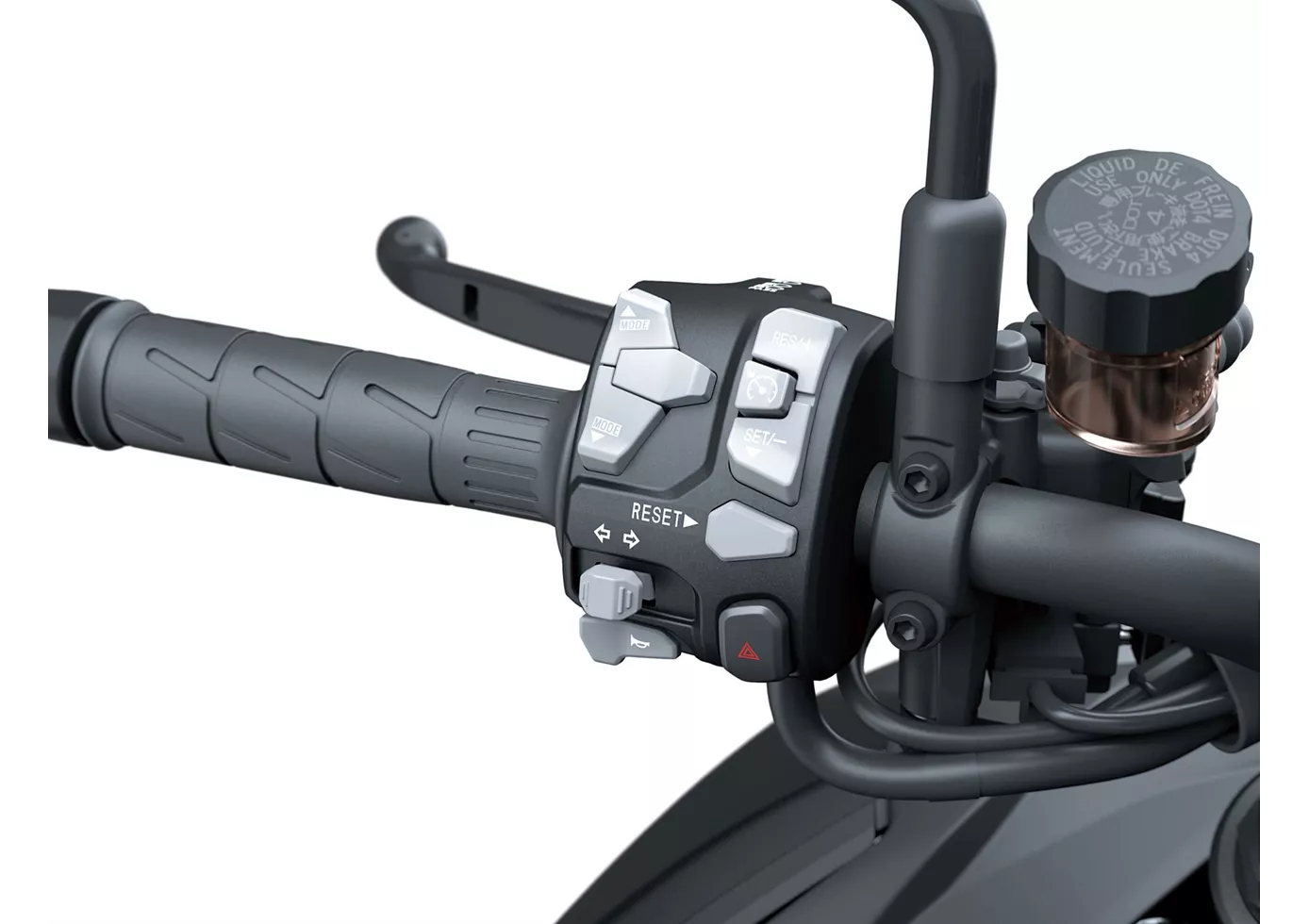
A fascinante unidade de potência da Kawasaki não inspira apenas como motivo para as cartas do quarteto ou na mesa dos clientes habituais. O motor é feito para uso prático. No selim da moto, pode desfrutar do impulso em todas as situações. Os comandos do acelerador são executados diretamente, de forma intensa mas também controlável. No entanto, a moto não é um desportista atlético, mas sim uma moto naked robusta. Ela sempre pontua quando a soberania e o poder são necessários.
Kawasaki Z900 70kW 2018
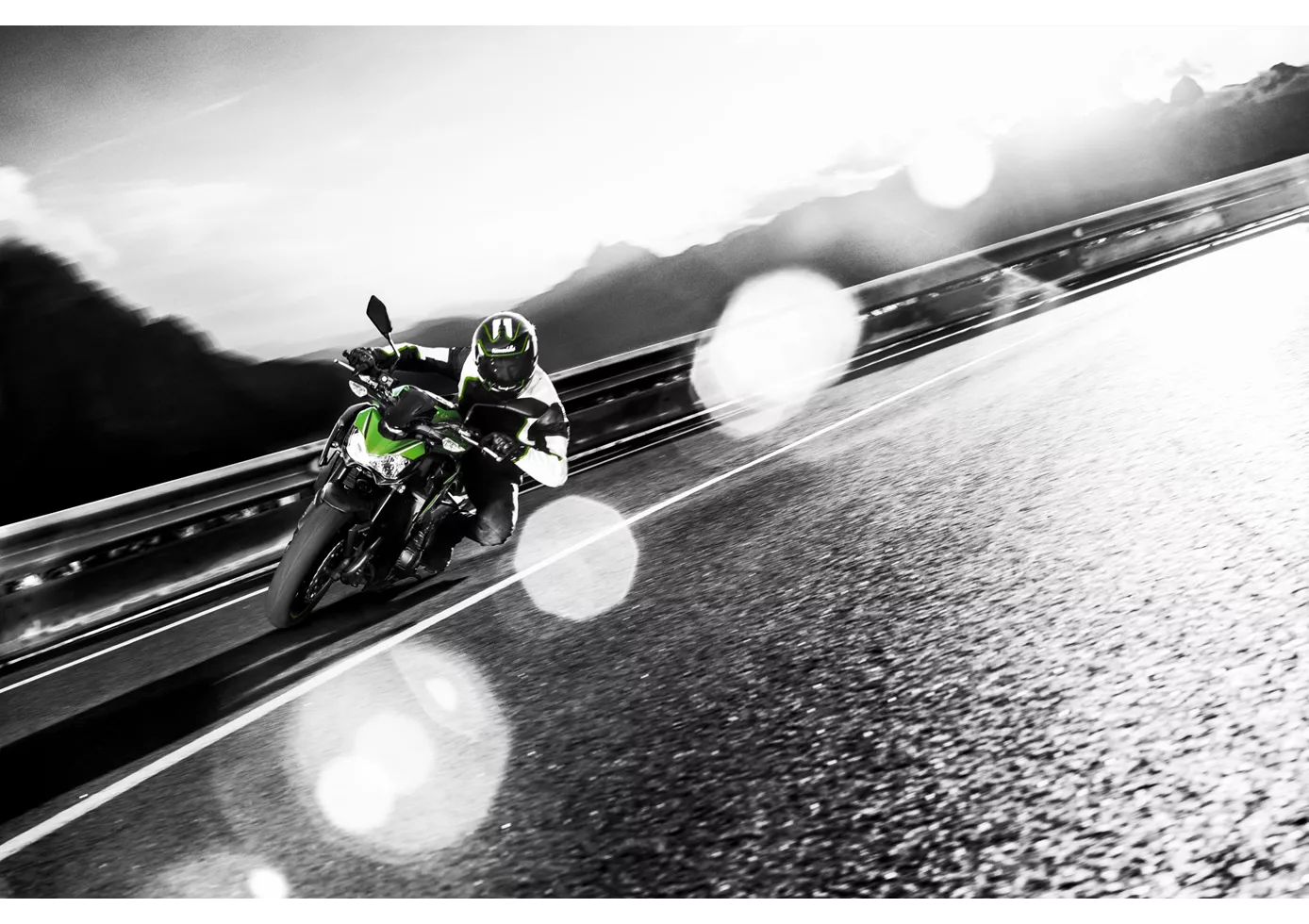
A Z900 é uma mota de entrada de gama de topo. Motor muito suave, excelentes travões e muitas opções de ajuste no quadro e nas alavancas. A aceleração pode ser demasiado boa para os viciados em velocidade, mas é a ideal para a aprendizagem. A falta de artifícios electrónicos, modos de condução e controlo de tração também não incomoda, mas faz da Z900 uma boa moto para aprender o básico da locomoção em duas rodas. Uma purista de alta qualidade, uma verdadeira mota, mesmo com apenas 48 cv!
Comparação de preços Preço médio de mercado Kawasaki Z H2 vs Kawasaki Z900 70kW
There are a few key differences between a Kawasaki Z H2 2020 and a Kawasaki Z900 70kW 2018. In terms of price, the actual average price of a Kawasaki Z H2 2020 is about 70% higher. A Kawasaki Z H2 2020 experiences a loss of 780 EUR in one year of ownership. This is offset by a loss of 280 EUR for a Kawasaki Z900 70kW 2018. Compared to Kawasaki Z900 70kW 2018 there are more Kawasaki Z H2 2020 bikes available on the 1000PS.de Marketplace, specifically 10 compared to 5. It takes less time to sell a Kawasaki Z H2 with 148 days compared to 194 days for a Kawasaki Z900 70kW. Since model year 2020 1000PS.de editors have written 14 reviews for the Kawasaki Z H2 and 10 reviews for the Kawasaki Z900 70kW since model year 2018. The first review for the Kawasaki Z H2 was published on 10/10/2019 and now has more than 82 500 views. This compares to more than 104 300 views for the first review on Kawasaki Z900 70kW published on 23/11/2018.
